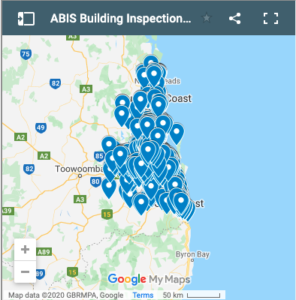Fire Doors
A fire door is a door with a fire-resistance rating (sometimes referred to as a fire protection rating for closures) used as part of a passive fire protection system to reduce the spread of fire or smoke between compartments and to enable safe evacuation from a building.
Exit Doors are a critical part of the fire and safety infrastructure of a building. By law there are very specific locking requirements required for Exit Doors. Locks used on Exit Doors – which also include Fire Doors and Path of Travel Doors – are governed by Building Codes of Australia (BCA) Ordinance D2.21. Mostly these doors are identified by an illuminated green EXIT sign above (or leading to) the Exit Door.
Exit safety is paramount, and includes emergency evacuations such as fires, toxic gas leaks, chemical spills, personal safety, and even bomb threats. The code specifically states that personal safety takes precedence over security. Local Council Building and Fire Inspectors, and the Fire Brigade, are the authorities that most commonly police compliance of this regulation. The regulation is complex with numerous grey areas, with the ultimate interpretation falling with the inspecting authority.
Local councils also require compulsory annual fire safety certificates, which also encompass requirements within regulation D2.21.
There are three categories of Exit Doors:
Fire Door:
A Fire Door is a door that enters a fireproof stairway or tunnel. The door itself is made from a special fire resistant material, and has a fire rating compliance tag fitted to the hinge edge of the door. A steel fire resistant door frame is also used.
EXIT Door:
An Exit Door is a door that allows an emergency exit from a building. Dependant on its location, it need not necessarily be fire rated, or steel framed.
Path of Travel Door:
A path of travel door is a door in the egress pathway leading to or between a Fire Door or Exit Door. They are often dual purpose and also used as smoke doors.
D2.21 Compliance
The exit opening action of a lock must be a single handed downward lever action. A pushing action is also allowed, and is preferred.
Internal knobs or turn snibs are not permitted. This provision takes into account the need for an emergency opening mechanism to be operable by people with hand or arm related disabilities, burns to their hands, with perspiring or wet hands, or the aged or infirm.
- The opening mechanism should be capable of being operated by a nudging action whilst dragging an injured or unconscious person to safety.
- Key locking in not permissible on the exit side (inside) of the door.
- Only one lock per door is permissible.
- Locks must be fitted at a height of between 900mm and 1100mm from the floor level
In the case of Fire Doors, the lock must be self-latching, and be fire rated in accordance with AS1905.1. A fire rated automatic door closer must also be fitted. Only fire rated hardware may be fitted to fire rated doors. Note on door lock heights Exit Doors, Fire Doors, Path of Travel Doors, and Disabled Access Doors, now have a standardised lock height of 900mm-1100mm. The exception being locks in Childcare facilities, which may be 1500mm-1650mm as necessary.
It is a compulsory requirement and duty of care to ensure that all exit doors are safe and functional and BCA code compliant.
Fire Doors must only be fitted with door hardware fire rated in accordance with AS1905.1
Fire Door locks must be self-latching and are not permitted to have a hold open feature. It is a legal offence to prop open or otherwise interfere with the automatic closing action of a Fire Door. Fire Doors must be fitted with a fire rated automatic (non hold open) door closer. An automatic closing door is essential in controlling smoke, heat, and back drafts, which could potentially feed the fire.
Safety comes before security. Security cannot be upgraded beyond the point of a single D2.21/AS1905.1 compliant lock. Non-complaint deadlocks, multiple locks, locking bolts, padlocks, or padbolt type fittings, are all considered dangerous, and are not permitted to be used. Replacement locks or hardware must be brought up to current BCA compliance.
WIKIPEDIA ENTRY FOR FIRE DOOR.




